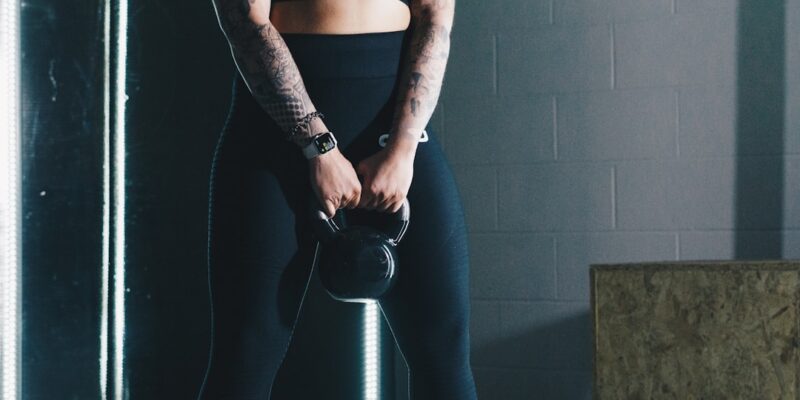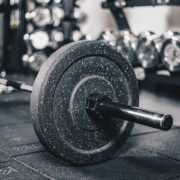
Total-Body Conditioning: Rowing Machine Workouts
Total-body conditioning refers to a type of exercise that targets multiple muscle groups and provides a comprehensive workout for the entire body. It is an effective way to improve cardiovascular health, increase muscle strength and endurance, and achieve overall fitness. One popular form of total-body conditioning is rowing machine workouts.
Rowing machine workouts involve using a rowing machine, also known as an ergometer or erg, to simulate the motion of rowing a boat. This exercise engages the muscles in the arms, shoulders, back, core, and legs, making it a highly effective total-body workout. Whether you are a beginner or an advanced athlete, rowing machine workouts can be tailored to your fitness level and goals.
Key Takeaways
- Rowing machine workouts provide a total-body conditioning workout that can improve cardiovascular health, build muscle, and burn calories.
- Benefits of rowing machine workouts include improved posture, increased endurance, and reduced stress on joints.
- Proper technique on the rowing machine involves maintaining a straight back, engaging the core, and using the legs, back, and arms in a coordinated motion.
- Beginner rowing machine workouts can include short intervals with rest breaks, while intermediate and advanced workouts can incorporate longer intervals and higher resistance levels.
- Resistance training can be incorporated with rowing machine workouts by adding weights or using resistance bands.
Benefits of Rowing Machine Workouts for Total-Body Conditioning
1. Improved cardiovascular health: Rowing is a highly aerobic exercise that gets your heart pumping and increases your lung capacity. Regular rowing machine workouts can improve your cardiovascular endurance, lower your resting heart rate, and reduce the risk of heart disease.
2. Increased muscle strength and endurance: Rowing engages multiple muscle groups simultaneously, making it an excellent strength training exercise. It targets the muscles in your arms, shoulders, back, core, and legs, helping to build strength and endurance in these areas.
3. Low-impact exercise: Unlike running or jumping exercises that put stress on your joints, rowing is a low-impact exercise that is gentle on your joints. This makes it suitable for people of all ages and fitness levels, including those with joint issues or injuries.
4. Full-body workout: One of the biggest advantages of rowing machine workouts is that they provide a full-body workout. The pulling motion engages the muscles in your upper body, while the pushing motion engages the muscles in your lower body. This comprehensive workout helps to tone and strengthen your entire body.
Understanding the Rowing Machine and Proper Technique
To get the most out of your rowing machine workouts, it is important to understand the different parts of the rowing machine and use proper technique.
The rowing machine consists of several key components, including the seat, footrests, handle, and resistance mechanism. The seat slides back and forth on a rail, allowing you to simulate the motion of rowing. The footrests are adjustable and should be positioned so that your feet are securely strapped in. The handle is attached to a chain or strap and is used to pull against the resistance mechanism.
Proper technique for rowing involves a sequence of movements that engage different muscle groups. Start by sitting on the seat with your feet securely strapped in the footrests. Grab the handle with an overhand grip and extend your arms forward, keeping your back straight and core engaged. From this starting position, push off with your legs, driving them back while keeping your arms extended. Once your legs are fully extended, lean back slightly and pull the handle towards your chest, engaging your back muscles. Reverse the motion by extending your arms forward, leaning forward from the hips, and bending your knees to return to the starting position.
Common mistakes to avoid when rowing include hunching your back, rounding your shoulders, and using too much arm strength. It is important to maintain proper posture throughout the exercise and use a fluid motion that engages both your upper and lower body.
Beginner Rowing Machine Workouts for Total-Body Conditioning
| Workout | Duration | Calories Burned | Targeted Muscles |
|---|---|---|---|
| Warm-up | 5 minutes | 25-50 | Full body |
| Interval Training | 20-30 minutes | 300-500 | Legs, core, back, arms |
| Cool-down | 5 minutes | 25-50 | Full body |
If you are new to rowing machine workouts, it is important to start with a beginner-friendly routine that focuses on proper form and technique. Here is a sample beginner workout plan:
1. Warm-up exercises: Begin with 5-10 minutes of light cardio exercises such as jogging or cycling to warm up your muscles and increase blood flow.
2. Basic rowing workout: Start with a 5-minute rowing session at a low intensity to get familiar with the motion and build endurance. Focus on maintaining proper form and technique throughout the workout.
3. Cool-down exercises: Finish your workout with 5-10 minutes of light cardio exercises to gradually lower your heart rate and stretch your muscles.
Intermediate Rowing Machine Workouts for Total-Body Conditioning
Once you have mastered the basic rowing technique, you can progress to more challenging intermediate workouts. Here is a sample intermediate workout plan:
1. Advanced warm-up exercises: Begin with 5-10 minutes of light cardio exercises, followed by dynamic stretches that target the muscles used in rowing, such as arm circles, leg swings, and torso twists.
2. Intermediate rowing workout: Start with a 10-minute rowing session at a moderate intensity, focusing on maintaining proper form and increasing your stroke rate. Gradually increase the intensity and duration of your rowing sessions as you build strength and endurance.
3. Cool-down exercises: Finish your workout with 5-10 minutes of light cardio exercises, followed by static stretches that target the muscles used in rowing, such as hamstring stretches, chest stretches, and shoulder stretches.
Advanced Rowing Machine Workouts for Total-Body Conditioning
For those who are experienced rowers or athletes looking for a more challenging workout, advanced rowing machine workouts can provide an intense total-body conditioning routine. Here is a sample advanced workout plan:
1. Dynamic warm-up exercises: Begin with 5-10 minutes of light cardio exercises, followed by dynamic stretches that target the muscles used in rowing, such as walking lunges, high knees, and arm swings.
2. Advanced rowing workout: Start with a 15-minute rowing session at a high intensity, focusing on maintaining proper form and increasing your stroke rate. Incorporate interval training by alternating between periods of high-intensity rowing and active recovery.
3. Cool-down exercises: Finish your workout with 5-10 minutes of light cardio exercises, followed by static stretches that target the muscles used in rowing, such as hip flexor stretches, tricep stretches, and calf stretches.
Incorporating Resistance Training with Rowing Machine Workouts
Resistance training involves using external resistance, such as weights or resistance bands, to strengthen and tone your muscles. Combining resistance training with rowing machine workouts can further enhance your total-body conditioning routine.
Benefits of incorporating resistance training with rowing machine workouts include increased muscle strength and endurance, improved bone density, and enhanced calorie burn. By adding resistance exercises to your rowing routine, you can target specific muscle groups and challenge your body in new ways.
Examples of resistance training exercises to incorporate with rowing machine workouts include bicep curls, tricep extensions, shoulder presses, squats, lunges, and deadlifts. These exercises can be performed using dumbbells, kettlebells, resistance bands, or weight machines.
Designing a Rowing Machine Workout Plan for Total-Body Conditioning
To design an effective rowing machine workout plan for total-body conditioning, consider the following factors:
1. Fitness level: Tailor your workout plan to your current fitness level. Beginners should start with shorter sessions at a lower intensity and gradually increase the duration and intensity over time.
2. Goals: Determine your fitness goals and adjust your workout plan accordingly. If you are looking to improve cardiovascular health, focus on longer rowing sessions at a moderate intensity. If you want to build muscle strength and endurance, incorporate resistance training exercises into your routine.
3. Schedule: Consider how many days per week you can commit to rowing machine workouts and plan your schedule accordingly. Aim for at least 3-4 sessions per week to see noticeable results.
Sample workout plan:
– Monday: Beginner rowing workout (20 minutes)
– Tuesday: Rest day
– Wednesday: Intermediate rowing workout (30 minutes) + resistance training (20 minutes)
– Thursday: Rest day
– Friday: Advanced rowing workout (40 minutes) + resistance training (30 minutes)
– Saturday: Rest day
– Sunday: Active recovery day (light cardio exercises or yoga)
Tips for Maximizing Results from Rowing Machine Workouts
To maximize your results from rowing machine workouts, consider the following tips:
1. Consistency is key: Stick to a regular workout schedule and make rowing machine workouts a part of your routine. Consistency is key to achieving and maintaining fitness goals.
2. Proper nutrition and hydration: Fuel your body with nutritious foods and stay hydrated before, during, and after your workouts. This will provide the energy and nutrients needed for optimal performance and recovery.
3. Rest and recovery: Allow your body time to rest and recover between workouts. This will help prevent overtraining and reduce the risk of injury. Incorporate rest days into your workout plan and listen to your body’s signals.
Safety Considerations for Rowing Machine Workouts for Total-Body Conditioning
While rowing machine workouts are generally safe for most people, it is important to prioritize safety and take precautions to avoid injury.
1. Importance of proper form: Maintain proper form throughout your rowing sessions to prevent strain on your muscles and joints. If you are unsure about proper technique, consider working with a certified rowing coach or trainer.
2. Safety precautions to take: Adjust the footrests and straps to ensure a secure fit for your feet. Start with a low resistance setting and gradually increase as you build strength and endurance. Use caution when getting on and off the rowing machine to avoid tripping or falling.
3. When to consult a doctor before starting a workout routine: If you have any pre-existing medical conditions or injuries, it is important to consult with your doctor before starting a rowing machine workout routine. They can provide guidance and ensure that rowing is safe for you.
In conclusion, rowing machine workouts are an effective way to achieve total-body conditioning. They provide numerous benefits, including improved cardiovascular health, increased muscle strength and endurance, and a low-impact full-body workout. By understanding the rowing machine and using proper technique, you can maximize the effectiveness of your workouts. Whether you are a beginner or an advanced athlete, there are various workout plans available to suit your fitness level and goals. By incorporating resistance training, designing a personalized workout plan, and following safety considerations, you can achieve optimal results from your rowing machine workouts.
FAQs
What is a rowing machine?
A rowing machine is a piece of exercise equipment that simulates the motion of rowing a boat. It consists of a seat, footrests, a handlebar, and a resistance mechanism.
What are the benefits of using a rowing machine?
Rowing machine workouts provide a total-body workout that can improve cardiovascular health, build muscle strength and endurance, and burn calories. It is a low-impact exercise that is easy on the joints and can be done by people of all fitness levels.
How do I use a rowing machine?
To use a rowing machine, sit on the seat with your feet securely fastened on the footrests. Grab the handlebar with an overhand grip and extend your arms straight out in front of you. Lean forward slightly and then push off with your legs, pulling the handlebar towards your chest as you do so. Reverse the motion to return to the starting position.
What are some rowing machine workouts for total-body conditioning?
Some rowing machine workouts for total-body conditioning include interval training, endurance training, and strength training. Interval training involves alternating between high-intensity and low-intensity rowing, while endurance training involves rowing at a steady pace for an extended period of time. Strength training involves rowing with a higher resistance setting to build muscle strength and endurance.
How often should I use a rowing machine?
The frequency of rowing machine workouts depends on your fitness goals and level of fitness. Beginners may want to start with 2-3 workouts per week, while more advanced users may be able to handle 4-5 workouts per week. It is important to listen to your body and not overdo it, as rowing can be a demanding exercise.













